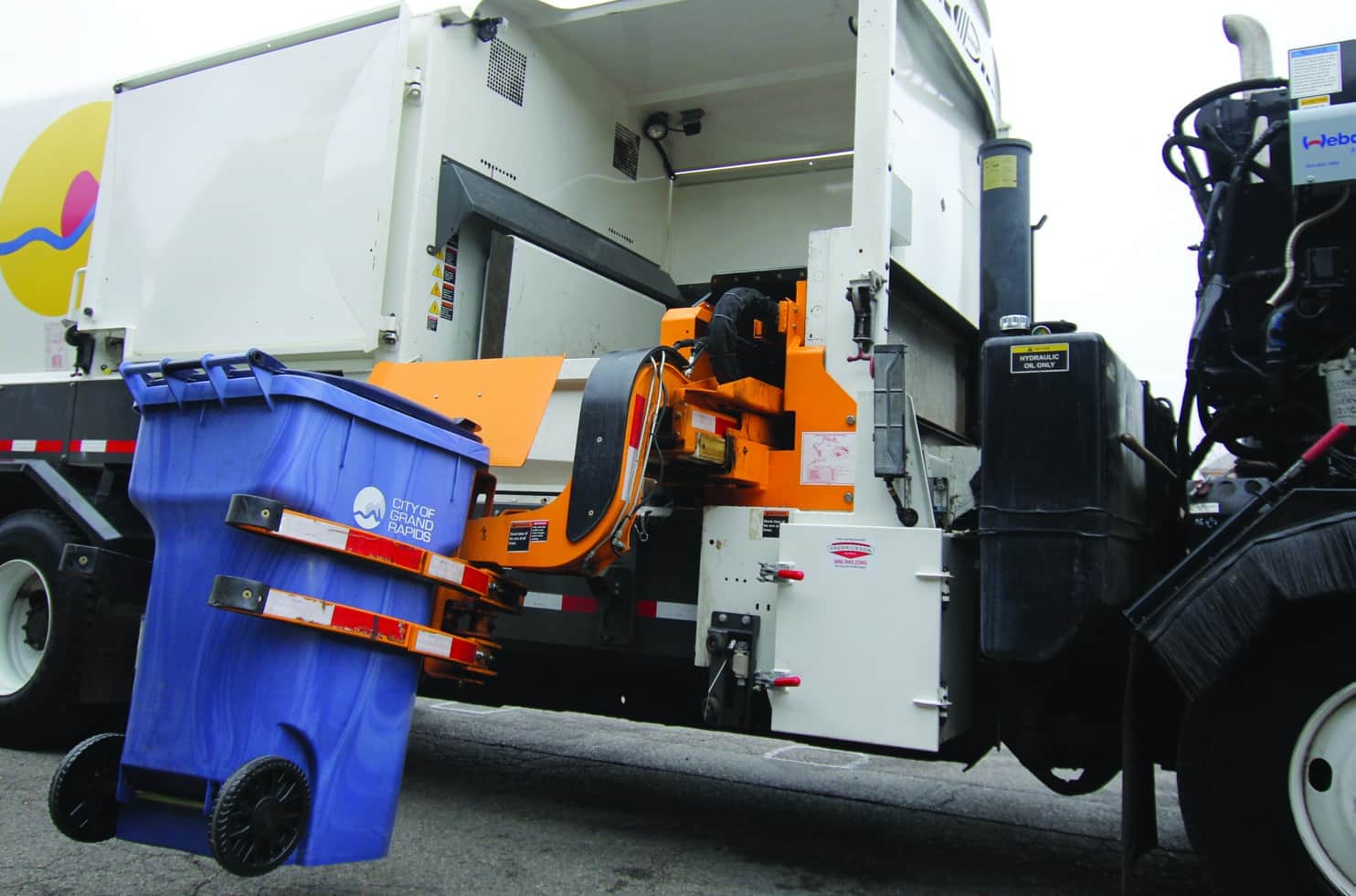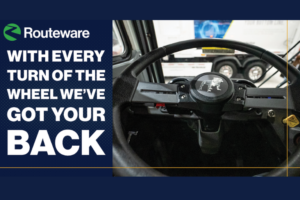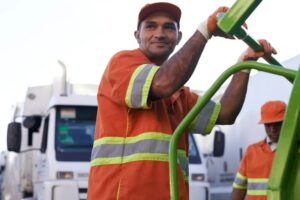Even as municipalities continue to vie to recruit and retain solid waste drivers, they still have to keep a laser focus on the broader goals of their operations. Increasing landfill diversion, decreasing recycling contamination, and continually finding ways to do more with less are on everyone’s minds.
Tools for fleet automation help streamline operations and save costly inputs like labor hours and fuel, while reducing vehicle wear-and-tear and subsequent maintenance costs. Plus, in-cab computers that send routes directly to drivers and help them stay in constant communication with the back office also make the driver’s job easier and more enjoyable.
When drivers are empowered with technology like onboard tablets and truck cameras, they can keep an eye on contamination and play an important role in educating customers about solid waste programs.
In the City of Grand Rapids, Michigan, in fact, drivers use cameras to snap photos of overfilled carts they don’t collect, arming the customer service team with evidence they can use to educate the resident if they call to complain. Drivers also place hang-tags on carts with unpaid bills, alerting customers about why their refuse wasn’t collected.
Drivers have come to rely on technology to help them get the job done efficiently and effectively — so much, in fact, that many say they don’t want to run a route without a tablet!
More than just hauling trash
The City’s solid waste program is structured to encourage recycling, decrease landfilling, and limit contamination. Residents pay one solid waste fee based on the trash they throw away, and there’s no charge for recycling.
Drivers are the first line of defense when it comes to making sure that residents follow program rules.
Documenting program violations or additional charges needs to be done in a way that’s fair and transparent, otherwise drivers are on the spot to justify their decisions in the face of customer complaints. Residents who have a negative account balance will receive an orange tag on their cart, and it won’t be picked up. Overfilled or inaccessible carts are passed by. Contaminated carts are photographed and left on the curb until they’re corrected. And late set-outs are charged a go-back fee if it can be proven that it was not missed by the driver. None of this can happen efficiently with manual processes – or with a technology solution that’s difficult to use.
Solutions drivers actually want to use
A software solution can only deliver results if it’s consistently used across the fleet. Grand Rapids’ previous fleet management software wasn’t embraced by drivers because they found it cumbersome and overly technical. The municipality switched over to Routeware in 2018, installing 33 onboard tablet computers, 36 cameras, 32 RFIDs, and picture service. They also added a subscription to EasyRoute for efficient route optimization. Driver uptake of the Routeware system was much faster because it’s more intuitive and easier to troubleshoot on the road.
“Routeware is easy for drivers to use. You don’t have to be tech savvy, and they can use it without support,” said Robert Swain, Grand Rapids Acting Manager of Public Works.
With technology supporting collaboration between drivers and the back office, the City’s public works team was able to dramatically improve communication, operational efficiencies, and customer service. Routeware enhances the feedback cycle, providing vital reporting and analysis that helps strengthen Grand Rapids’ sustainability culture.
On the road with Routeware and EasyRoute
The Grand Rapids Public Works department is using Routeware and EasyRoute to solve for a number of issues – in the trucks, in neighborhoods, and in the office:
- Missed collections: Before Routeware, a truck would be sent out the day after collection day to pick up missed collections. Then, the driver would call the office to charge the customer. Now, using RFID and onboard cameras, any missed stops are sent directly to helper trucks that can collect the same day and accurately charge the customer. In fact, Grand Rapids has seen revenue increase because tag reads have gone from 93% to 98% accuracy. And go-backs now average just one per route per day.
- Late set-outs: When a cart is missed, there can be a debate between the customer and the driver about who’s at fault. Now, with onboard cameras, drivers have immediate documentation about whether a cart was hidden or a late set-out. That gives the customer service team the information they need to bill appropriately when a driver goes back for a one-off pickup.
- Customer complaints: When a resident calls in to say the truck didn’t visit their neighborhood, Grand Rapids’ 311 department can now access live maps to tell where trucks traveled that day. If a street was missed, information can be relayed immediately to the driver.
- Tracking driver time: The Grand Rapids Public Works analyst team loves pulling reports to identify additional opportunities where they can recommend increased efficiencies and revenue generation. For example, they examine idle time, distance, and breaks to see where schedules can be modified. Even stopping at a railway crossing can be optimized when the team inputs train arrival times.
- Driver empowerment: Because Routeware in-cab tablets are so easy to use, drivers embrace them for many aspects of their work. They can be confident when they skip a cart due to negative account balance because they have access to customer information at their fingertips. If a cart is overloaded or otherwise in violation, they’re able to take a time-stamped picture and tag the cart. And if a customer needs special service, such as a side-door pickup, the details are available in their digital notes.
- Technology troubleshooting: Grand Rapids has seen drivers with no technical or mechanical skills learn quickly how to troubleshoot their system when they’re out on the road. Routeware makes it easy to learn what to look for, what to check, and what steps to take to make sure the unit is functioning properly. That means not having to send an expensive IT team out to make a fix.
By using Routeware and EasyRoute, Grand Rapids is building a culture around collaboration and sustainability. Drivers are more mindful of running their routes efficiently when they have transparency into how their truck fits the overall system. Data and video that comes out of Routeware supports tangible discussions about how the whole team can work toward common goals.
Learn more. We help municipalities and haulers improve operations, increase diversion, and decrease contamination — all while saving money on labor and fuel. Let’s talk.





